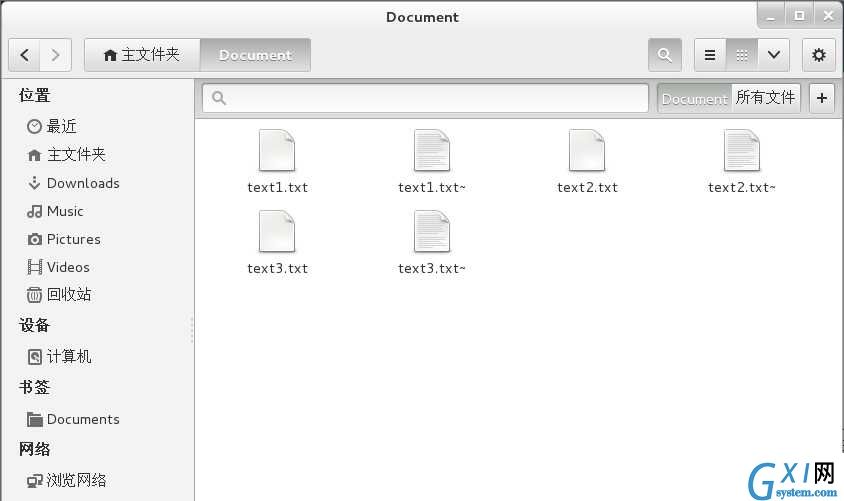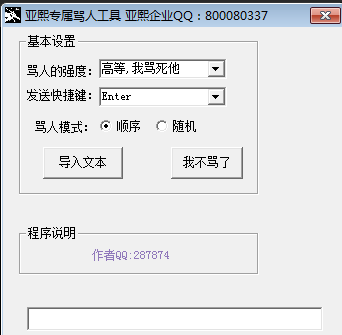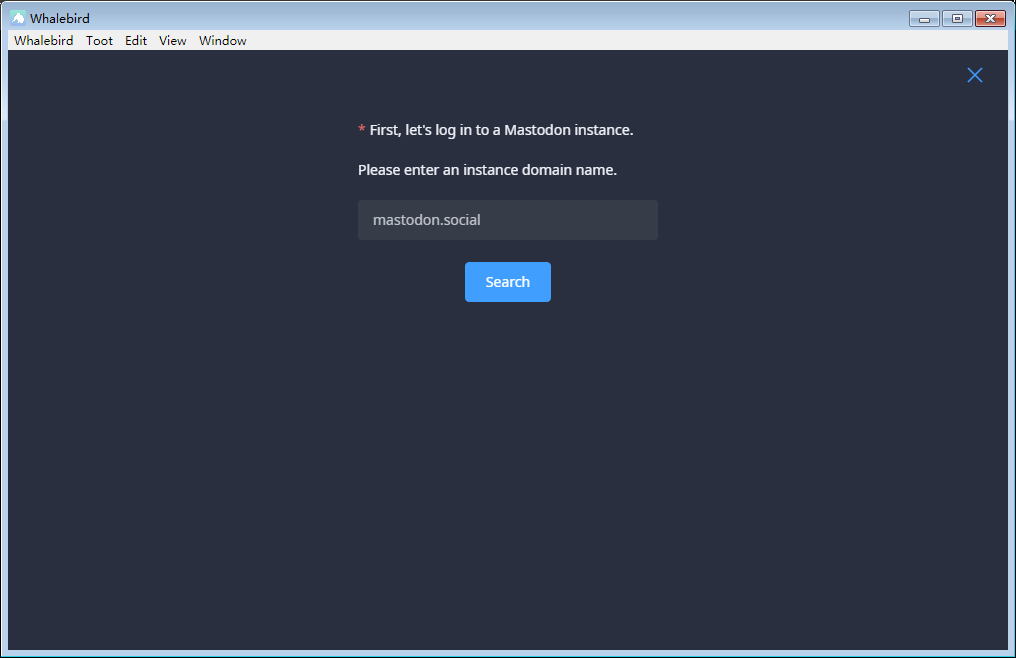每天一个Linux命令(8)cat命令
时间:2022-04-03 11:38
cat命令连接文件并打印到标准输出设备上,cat经常用来显示文件的内容,类似于下的type命令。
注意:当文件较大时,文本在屏幕上迅速闪过(滚屏),用户往往看不清所显示的内容。因此,一般用more等命令分屏显示。为了控制滚屏,可以按Ctrl+S键,停止滚屏;按Ctrl+Q键可以恢复滚屏。按Ctrl+C(中断)键可以终止该命令的执行,并且返回Shell提示符状态。
(1)用法:
用法:cat [选项] [文件]...
(2)功能:
将[文件]或标准输入组合输出到标准输出。
(3)选项参数:
1)-n, --number 对输出的所有行编号
2) -s, --squeeze-blank 不输出多行空行,有连续两行以上的空白行,就代换为一行的空白行
3) -E, --show-ends 在每行结束处显示 $
4) -b, --number-nonblank 对非空输出行编号
5) -A, --show-all 等价于 -vET,显示不可打印字符,行尾显示“$”
6) -T, --show-tabs 将跳格字符显示为 ^I
7) -v, --show-nonprinting 使用 ^ 和 M- 引用,除了 LFD 和 TAB 之外
8) --help 显示此帮助信息并退出
9) --version 输出版本信息并退出
(4)实例:
由于cat命令是查看文档的,所以首先新建文本文档test1.txt,test2.txt,test3.txt并在文档中写入内容:
方法一:
(1)首先用touch指令新建三个文档:
[sunjimeng@localhost Document]$ touch {text1.txt,text2.txt,text3.txt}
[sunjimeng@localhost Document]$ ll
总用量 0
-rw-rw-r--. 1 sunjimeng sunjimeng 0 5月 4 22:18 text1.txt
-rw-rw-r--. 1 sunjimeng sunjimeng 0 5月 4 22:18 text2.txt
-rw-rw-r--. 1 sunjimeng sunjimeng 0 5月 4 22:18 text3.txt
(2)用图形界面,打开文档输入数据:

(3)由于在CentOs里文档有自动备份的功能,因此这里有6个文档。其中带~符号的需要用查看备份的软件来打开:

(4)查看shell中的文档信息:
[sunjimeng@localhost Document]$ ll 总用量 12 -rw-rw-r--. 1 sunjimeng sunjimeng 61 5月 4 22:23 text1.txt -rw-rw-r--. 1 sunjimeng sunjimeng 0 5月 4 22:18 text1.txt~ -rw-rw-r--. 1 sunjimeng sunjimeng 61 5月 4 22:23 text2.txt -rw-rw-r--. 1 sunjimeng sunjimeng 0 5月 4 22:18 text2.txt~ -rw-rw-r--. 1 sunjimeng sunjimeng 61 5月 4 22:24 text3.txt -rw-rw-r--. 1 sunjimeng sunjimeng 0 5月 4 22:18 text3.txt~
方法二:在shell中直接修改文档的内容:
[sunjimeng@localhost Document]$ touch text4.txt [sunjimeng@localhost Document]$ cat >text4.txt <<EOF > test4‘s first line; > test4‘s second line; > test4‘s third line; > EOF [sunjimeng@localhost Document]$ ll 总用量 16 -rw-rw-r--. 1 sunjimeng sunjimeng 61 5月 4 22:23 text1.txt -rw-rw-r--. 1 sunjimeng sunjimeng 0 5月 4 22:18 text1.txt~ -rw-rw-r--. 1 sunjimeng sunjimeng 61 5月 4 22:23 text2.txt -rw-rw-r--. 1 sunjimeng sunjimeng 0 5月 4 22:18 text2.txt~ -rw-rw-r--. 1 sunjimeng sunjimeng 61 5月 4 22:24 text3.txt -rw-rw-r--. 1 sunjimeng sunjimeng 0 5月 4 22:18 text3.txt~ -rw-rw-r--. 1 sunjimeng sunjimeng 61 5月 4 22:31 text4.txt //这里并没有创建备份文件,是区别所在 [sunjimeng@localhost Document]$
1)[sunjimeng@localhost Document]$ cat -n text4.txt 将包括空行在内的各行按编号输出
[sunjimeng@localhost Document]$ cat >text4.txt <<EOF //先修改text4.txt的内容 > text4‘s first line > > > text4‘s second line > > text4‘s third line > > > EOF
[sunjimeng@localhost Document]$ cat -n text4.txt
1 text4‘s first line
2
3
4 text4‘s second line
5
6 text4‘s third line
7
8
2)[sunjimeng@localhost Document]$ cat -b text4.txt 将除空行在内的各行按编号输出
[sunjimeng@localhost Document]$ cat -b text4.txt
1 text4‘s first line
2 text4‘s second line
3 text4‘s third line
3)[sunjimeng@localhost Document]$ cat text1.txt text2.txt text3.txt 用cat命令直接输出各个文件,可以是一个也可以是多个
[sunjimeng@localhost Document]$ cat text1.txt text2.txt text3.txt test1‘s first line; test1‘s second line; test1‘s third line; test2‘s first line; test2‘s second line; test2‘s third line; test3‘s first line; test3‘s second line; test3‘s third line;
4)[sunjimeng@localhost Document]$ cat text1.txt text2.txt > text5.txt 将讲text1.txt和text2.txt输出到text5.txt里,和输出到标准输出一样,也可以有-n,-b等参数
由于这个特性,cat命令可以将多个压缩包合并成一个,可以用tar命令解压
# cat test.tar.gz_?? > test.tar.gz #可以用cat命令将被切割的多个压缩包合并成一个 # tar -xvzf test.tar.gz #再用tar命令解压
[sunjimeng@localhost Document]$ cat text1.txt text2.txt > text5.txt [sunjimeng@localhost Document]$ cat text5.txt test1‘s first line; test1‘s second line; test1‘s third line; test2‘s first line; test2‘s second line; test2‘s third line; [sunjimeng@localhost Document]$
5)[sunjimeng@localhost Document]$ tac text5.txt 倒序输出文件的各行内容
[sunjimeng@localhost Document]$ tac text5.txt test2‘s third line; test2‘s second line; test2‘s first line; test1‘s third line; test1‘s second line; test1‘s first line;
6)[sunjimeng@localhost Document]$ cat -s text4.txt 输出文档中的内容,如果有多个空行则用一个代替
[sunjimeng@localhost Document]$ cat -s text4.txt 最多连续输出一个空行 text4‘s first line text4‘s second line text4‘s third line [sunjimeng@localhost Document]$ cat text4.txt 有多少空行,输出多少空行 text4‘s first line text4‘s second line text4‘s third line
7)[sunjimeng@localhost Document]$ cat >text6.txt 从键盘录入内容到文件,回车是保存,退出Ctrl+z
[sunjimeng@localhost Document]$ cat >text6.txt I am MenAngel! //除了最后一个回车之后,其余回车是文档中数据的换行并保存 Practice Order! ^Z //回车后是Ctrl+Z命令退出 [3]+ 已停止 cat > text6.txt [sunjimeng@localhost Document]$ cat text6.txt I am MenAngel! Practice Order!
8)[sunjimeng@localhost Document]$ cat -E text4.txt 输出各行文本,并且以$符结尾
[sunjimeng@localhost Document]$ cat -E text4.txt text4‘s first line$ $ $ text4‘s second line$ $ text4‘s third line$ $ $
9)[sunjimeng@localhost Document]$ cat >text6.txt <<EOF 用$取表达式的值小小范例:
[sunjimeng@localhost Document]$ cat >text6.txt <<EOF > pwd=$(pwd) > EOF [sunjimeng@localhost Document]$ cat text6.txt pwd=/home/sunjimeng/Document
10)[sunjimeng@localhost Document]$ cat --help
[sunjimeng@localhost Document]$ cat --help
用法:cat [选项]... [文件]...
将[文件]或标准输入组合输出到标准输出。
-A, --show-all 等于-vET
-b, --number-nonblank 对非空输出行编号
-e 等于-vE
-E, --show-ends 在每行结束处显示"$"
-n, --number 对输出的所有行编号
-s, --squeeze-blank 不输出多行空行
-t 与-vT 等价
-T, --show-tabs 将跳格字符显示为^I
-u (被忽略)
-v, --show-nonprinting 使用^ 和M- 引用,除了LFD和 TAB 之外
--help 显示此帮助信息并退出
--version 显示版本信息并退出
如果没有指定文件,或者文件为"-",则从标准输入读取。
示例:
cat f - g 先输出f 的内容,然后输出标准输入的内容,最后输出g 的内容。
cat 将标准输入的内容复制到标准输出。
GNU coreutils online help: <http://www.gnu.org/software/coreutils/>
请向<http://translationproject.org/team/zh_CN.html> 报告cat 的翻译错误
要获取完整文档,请运行:info coreutils ‘cat invocation‘
11)[sunjimeng@localhost Document]$ cat --version
[sunjimeng@localhost Document]$ cat --version cat (GNU coreutils) 8.22 Copyright (C) 2013 Free Software Foundation, Inc. 许可证:GPLv3+:GNU 通用公共许可证第3 版或更新版本<http://gnu.org/licenses/gpl.html>。 本软件是自由软件:您可以自由修改和重新发布它。 在法律范围内没有其他保证。 由Torbjörn Granlund 和Richard M. Stallman 编写。



























